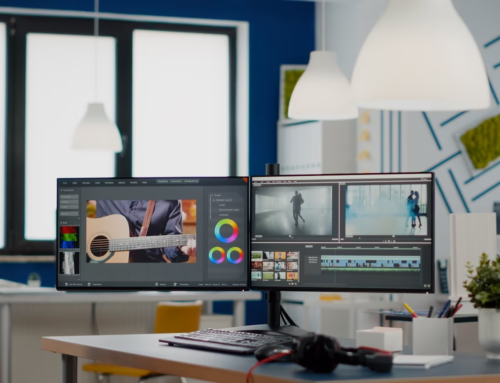In a world dominated by visual storytelling, the role of video editing emerges as the silent conductor orchestrating the symphony of moving images. Behind every captivating film, engaging YouTube video, or compelling advertisement lies the meticulous work of a video editor, blending creativity with technical expertise.
The Essence of Video Editing
1. The Canvas of Cinematic Expression: Video editing is more than just splicing clips together; it’s about crafting a narrative through the seamless arrangement of shots. Every cut, transition, and effect contributes to the overall storytelling, creating an emotional connection with the audience.
2. Tools of the Trade: Just as an artist has brushes and paints, a video editor wields a variety of tools. From industry-standard software like Adobe Premiere Pro and Final Cut Pro to more accessible options like DaVinci Resolve, these tools empower editors to bring their visions to life with precision and finesse.
3. The Rhythm of Editing: Timing is everything in the world of video editing. Editors play with the pacing of shots, creating a rhythm that guides the viewer through the narrative. Whether it’s a fast-paced action sequence or a slow, contemplative moment, the editor controls the tempo of the visual experience.
Crafting a Visual Narrative
1. Storyboarding and Pre-Visualization: Before the first frame is captured, video editors often engage in pre-visualization. Storyboarding and planning sequences help create a roadmap for the editing process, ensuring that each shot serves a purpose in advancing the narrative.
2. Color Grading Magic: Color grading is the secret sauce that gives a video its unique visual identity. Editors manipulate colors to evoke specific moods, enhance atmospheres, and create visual cohesion. The artistry lies in transforming raw footage into a polished and visually striking masterpiece.
3. Transitions as a Narrative Device: Transitions are not merely bridges between scenes; they can be powerful storytelling devices. Whether it’s a smooth cut, a dramatic fade, or a creative transition effect, editors use these techniques to enhance the viewer’s experience and maintain a cohesive narrative flow.
Embracing Technological Advancements
1. Special Effects and CGI: Advancements in technology have opened new frontiers for video editors. Special effects and computer-generated imagery (CGI) allow editors to create fantastical worlds, breathtaking visual effects, and immersive environments that push the boundaries of creativity.
2. Collaboration and Feedback: Video editing is often a collaborative process. Editors work closely with directors, cinematographers, and other creatives to bring their collective vision to fruition. Constructive feedback is a cornerstone of this collaboration, ensuring that the final product aligns with the intended creative vision.
In conclusion, video editing is both an art and a craft, where technical expertise meets creative intuition. As we immerse ourselves in a visual world saturated with moving images, the role of the video editor remains pivotal in shaping the way stories are told and experienced on the screen. Each edit is a brushstroke, contributing to the masterpiece that is visual storytelling.




Leave A Comment